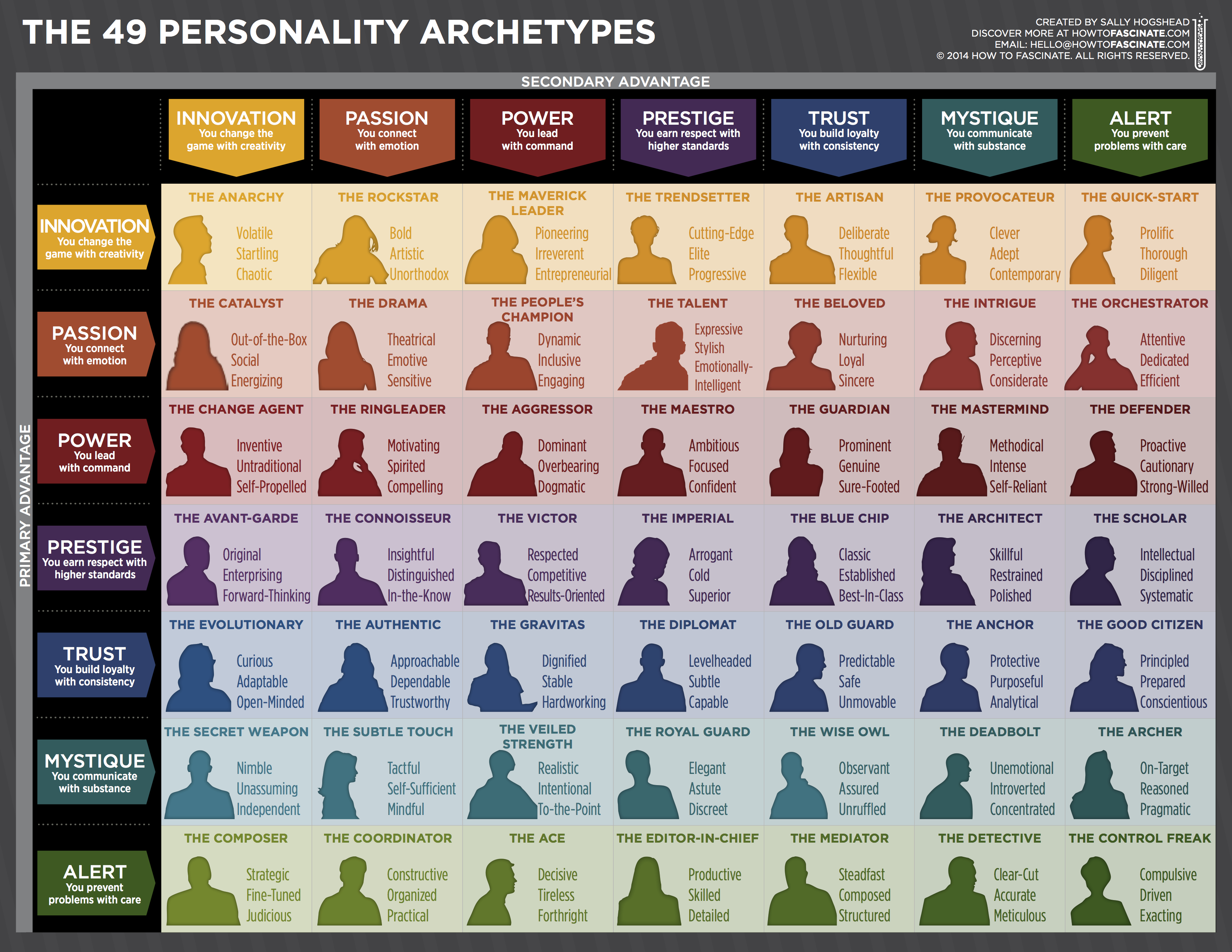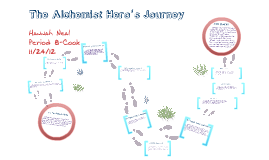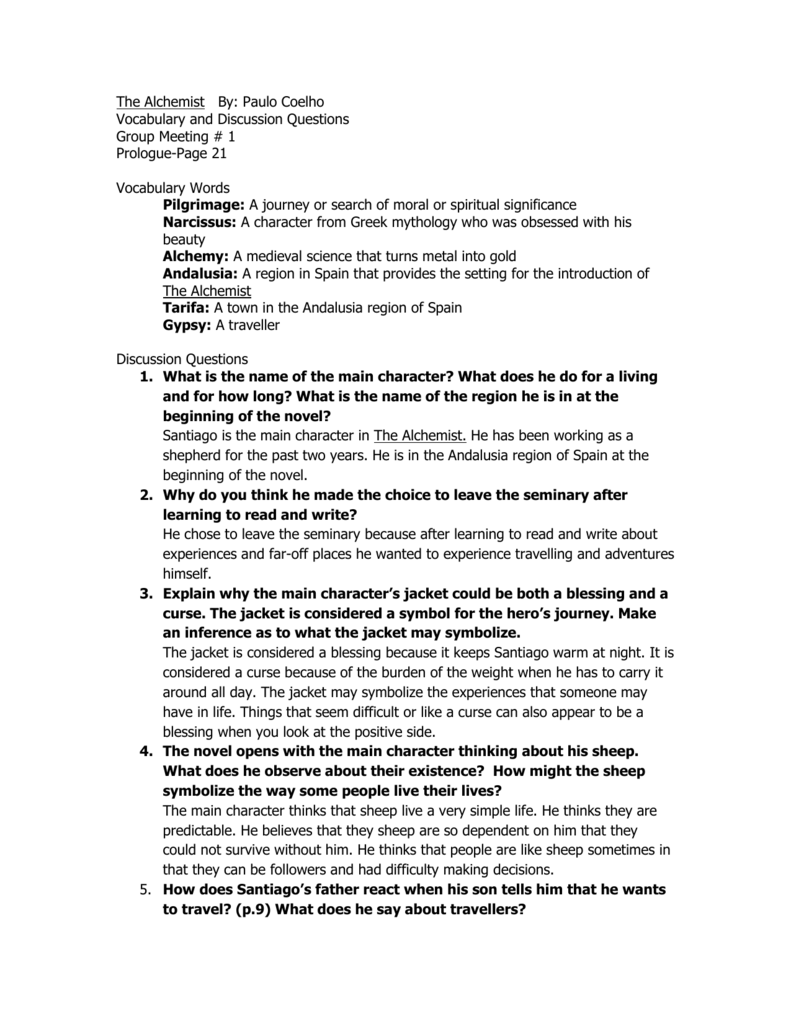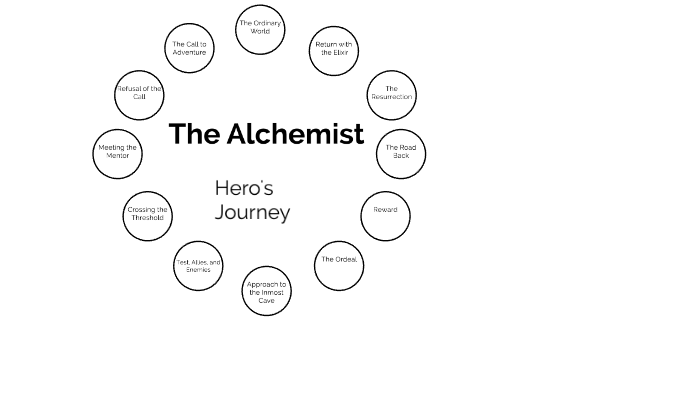The Alchemist tells the story of Santiago, a shepherd boy from Spain who experiences what is know as “The Hero's Journey”. This is a series of steps that transform a person. It begins with a call to adventure, and ends with the characters return to the known. The Call to Adventure: The first step is the Call to Adventure. A description of the seventeen stages of the monomyth (hero's journey) with examples from The Alchemist by Paulo Coelho. I recently read the book, The Alchemist by Paulo Coelho. The Alchemist tells a story of a young shepherd boy who goes on a journey and quest for treasure to realize his ‘personal legend’. While contemplating whether to stay with Fatima or continue on his journey, the alchemist says, “You must understand that love never keeps a man from pursuing his Personal Legend. If he abandons that pursuit, it’s because it wasn’t true love” The advice being not to let anyone or anything stop you in the pursuit of your dreams.

The Alchemist The Hero's Journey
| Author | Paulo Coelho |
|---|---|
| Original title | O Alquimista |
| Cover artist | Caravaggio, 'Narcissus', 1597-9 |
| Country | Brazil |
| Language | Portuguese |
| Genre | Quest, adventure, fantasy |
| Publisher | HarperTorch (English translation) |
Publication date | 1988 |
| 1993 | |
| Media type | Print (hardback, paperback and iTunes) |
| Pages | 163 pp (first English edition, hardcover), 208 pages (25th Anniversary Edition) |
| ISBN | 0-06-250217-4 (first English edition, hardcover) |
| OCLC | 26857452 |
| 869.3 | |
| Preceded by | The Pilgrimage(1987) |
| Followed by | Brida (1990) |
The Alchemist (Portuguese: O Alquimista) is a novel by Brazilian author Paulo Coelho that was first published in 1988. Originally written in Portuguese, it became a widely translated international bestseller.[1][2] An allegorical novel, The Alchemist follows a young Andalusian shepherd in his journey to the pyramids of Egypt, after having a recurring dream of finding a treasure there.
Plot[edit]
The Alchemist follows the journey of an Andalusian shepherd boy named Santiago. Believing a recurring dream to be prophetic, he asks a Gypsyfortune teller in the nearby town about its meaning. The woman interprets the dream as a prophecy telling the boy that he will discover a treasure at the Egyptian pyramids.
Early into his journey, he meets an old king named Melchizedek, or the king of Salem, who tells him to sell his sheep, so as to travel to Egypt, and introduces the idea of a Personal Legend. Your Personal Legend 'is what you have always wanted to accomplish. Everyone, when they are young, knows what their Personal Legend is.'[3]

Early in his arrival to Africa, a man who claims to be able to take Santiago to the pyramids instead robs him of what money he had made from selling his sheep. Santiago then embarks on a long path of working for a crystal merchant so as to make enough money to fulfill his personal legend and go to the pyramids.

Along the way, the boy meets an Englishman who has come in search of an alchemist and continues his travels with his new companion. When they reach an oasis, Santiago meets and falls in love with an Arabian girl named Fatima, to whom he proposes marriage. She promises to do so only after he completes his journey. Frustrated at first, he later learns that true love will not stop nor must one sacrifice to it one's personal destiny, since to do so robs it of truth.
The boy then encounters a wise alchemist who also teaches him to realize his true self. Together, they risk a journey through the territory of warring tribes, where the boy is forced to demonstrate his oneness with 'the soul of the world' by turning himself into a simoom before he is allowed to proceed. When he begins digging within sight of the pyramids, he is robbed yet again, but accidentally learns from the leader of the thieves that the treasure he sought all along was in the ruined church where he had his original dream.

Background[edit]
Coelho wrote The Alchemist in only two weeks in 1987. He explained that he was able to write at this pace because the story was 'already written in [his] soul.'[4]
The book's main theme is about finding one's destiny, although according to The New York Times, The Alchemist is 'more self-help than literature.'[5] The advice given Santiago that 'when you really want something to happen, the whole universe will conspire so that your wish comes true' is the core of the novel's philosophy and a motif that plays throughout it.[6]
The Alchemist was first released by Rocco,[7] an obscure Brazilian publishing house. Albeit having sold 'well,' the publisher after a year decided to give Coelho back the rights.[8] Needing to 'heal' himself from this setback, Coelho set out to leave Rio de Janeiro with his wife and spent 40 days in the Mojave Desert. Returning from the excursion, Coelho decided he had to keep on struggling[8] and was 'so convinced it was a great book that [he] started knocking on doors.'[4]
Adaptations[edit]
In 1994, a comic adaptation was published by Alexandre Jubran.[9] HarperOne, a HarperCollins imprint, produced an illustrated version of the novel, with paintings by the French artist Mœbius, but failed to convince Coelho 'to consent to the full graphic-novel treatment.'[10]The Alchemist: A Graphic Novel was published in 2010, adapted by Derek Ruiz and with artwork by Daniel Sampere.
Animal Farm Hero's Journey
The Alchemist's Symphony by the young Walter Taieb was released in 1997 with the support of Paulo Coelho, who wrote an original text for the CD booklet.[11] The work has eight movements and five interludes.[12][13]
In 2002, a theatrical adaptation of The Alchemist was produced and performed in London.[14] Since then there have been several productions by the Cornish Collective.[15] A later London performance was visited by the producer Ashvin Gidwani who, finding it “verbose but colourful”, decided to commission a new 90-minute version of the book from Deepa Gahlot for the Indian stage.[16] This was eventually launched in 2009.[17]
References[edit]
- ^'Paulo Coelho in WorldCat database'. WorldCat. Retrieved December 20, 2016.
- ^'The Alchemist > Editions'. Goodreads. Retrieved December 20, 2016.
- ^The Alchemist, HarperCollins paperback, 1998, p.21
- ^ abPool, Hannah (March 19, 2009). 'Question time'. The Guardian. Retrieved January 27, 2012.
- ^Cowles, Gregory (October 8, 2009). 'Inside the List'. The New York Times. Retrieved January 28, 2012.
- ^Flanagan, Mark. 'The Alchemist'.
- ^Retrieved 2019-05-16.
- ^ ab'Interview with Paulo Coelho'. Goodreads.com. March 2008. Retrieved January 27, 2012.
- ^''O Alquimista' vira filme de Hollywood - Cultura'. Estadão.
- ^Itzkoff, David (July 6, 2010). 'Graphic Novel of 'The Alchemist': Words Into Pictures'. The New York Times. Retrieved January 29, 2012.
- ^Walter Taieb (February 1, 2017). 'The Alchemist's Symphony'. Retrieved December 12, 2017 – via YouTube.
- ^Discogs
- ^Performance on YouTube
- ^Gardner, Lyn (January 11, 2002). 'The Alchemist, London' – via www.theguardian.com.
- ^'The Alchemist'.
- ^'I saw the Bhagvad Gita in The Alchemist: Ashvin Gidwani'. mid-day. April 18, 2009.
- ^ Mohua Das, Paulo Coelho's The Alchemist Breezes Through Town, Telegraph India, 20 October 2009
External links[edit]
| Wikiquote has quotations related to: The Alchemist (novel) |
The Alchemist Santiago Hero Journey
The Alchemist Hero S Journey Quotes
Furthermore, Campbell explained such patterns by using Carl Jung's theory of the collective unconscious, which he was strongly influenced with. Psychological organs that developed through the evolution, is the idea Jung gave of archetypes (Jung 81). To him they are recurring patterns, images and ideas which all humans inherited in their unconsciousness (Volgar 23). In addition, Campbell described his theory as a reoccurring cycle of pattern consisting of three phases: Departure, Initiation and Return, which he calls The Monomyth (Campbell 28), a deep inner journey of transformation that every hero must go through in order to grow (Voytilla vii).
As a result, several applications to Campbell’s theory have been conducted on postmodernism literature in works like Voytilla’s Myth and The Movies: Discovering the Myth Structure of 50 Unforgettable Films, where she applied the theory on major works such as The Godfather to even The Beauty and The Beast. But none was conducted on The Alchemist the self-established modern classic by Paulo Coelho.
Therefore, this paper attempts to take a first step on applying The Monomyth theory on Santiago’s journey, the protagonist of The Alchemist, as it focuses on the major traits of hero's journey pres...
... middle of paper ...
...In conclusion, we can say that after applying Joseph Campbell's theory of The Monomyth on The Alchemist; it is noticeable that despite The Alchemist being a postmodernism wok of literature, the author Coelho used all major patterns of the hero's journey of ancient myth in his novel and this developed Santiago's journey from an ordinary one into an archetypal one.
Works Cited
Campbell, Joseph. The Hero with a Thousand Faces. Princeton: Princeton University Press, 2004.
Coelho, Paulo. The Alchemist. London: HarperCollins, 2002.
Jung, Carl. Man and his symbol. London: Aldus Books Ltd, 1964.
Volgar, Christopher. The Writer’s Journey: Mythic Structure for Writers. Studio City: Michael Wiese Productions, 2007.
Voytilla, Stuart. Myth and the Movies: Discovering the Myth Structure of 50 Unforgettable Films. Ventura Boulevard: Michael Wiese Productions, 1999.
